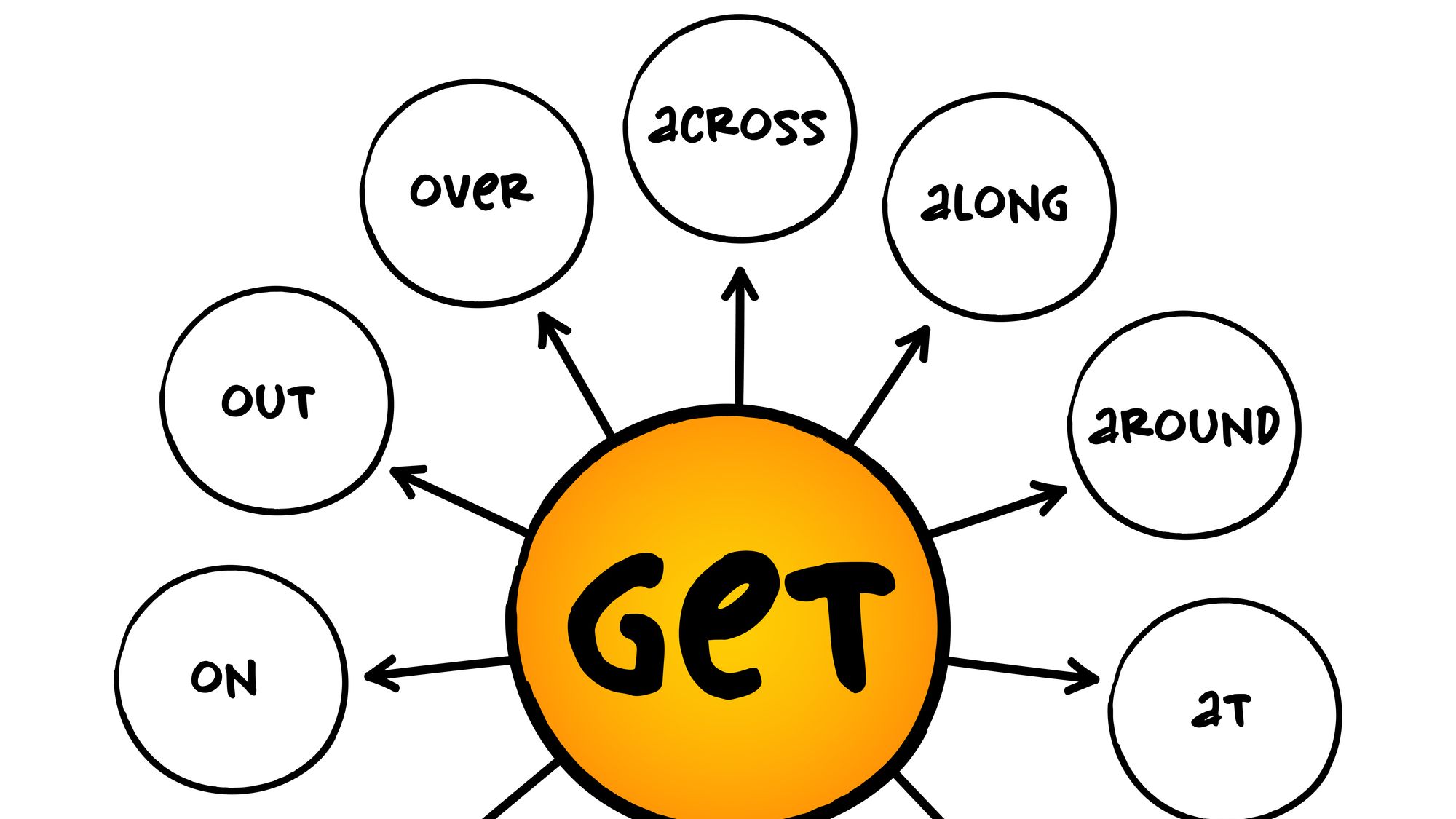
American English is full of phrasal verbs – in fact, most native English speakers prefer to use them over their synonyms. However, in order to understand when they're being used and in order to be understood when using them, we need to focus on our flow – linking the verbs to the prepositions. Read on for more!
Phrasal Verbs Part 1: Flowing with Phrasal Verbs
Many times when I talk about improving flow, I'm encouraging my learners to link words together, focus on contractions, the American flap sound, etc. When we focus on linking, many times this requires us to take a consonant and connect it with a vowel sound.
That's where phrasal verbs come in!
Let's look at an example: get in. You'll pronounce these two words on one breath as if they were one word by linking the t with the i. It looks like this getin or, get-in if the hyphens help you see what we're doing.
Well, let's back up for a sec – did you even know that get in is a phrasal verb? A phrasal verb combines a normal verb with a particle (usually an adverb or preposition) to create an entirely new verbal phrase. The meaning of a phrasal verb is usually unrelated to the individual meanings of the words that make up the phrasal verb. For instance, pick up means to grab or lift – a meaning very different from the definitions of pick and up alone.
I get it, while popular in spoken English, phrasal verbs can be quite confusing because their definitions aren't always easy to guess. It doesn't help that there are thousands of them and many phrasal verbs are alterations of the same base verb.
Okay, but what if I told you, let's forget about the meaning and instead focus on the linking?
Yes, it's great to know the meaning of these phrasal verbs as they often serve as colloquialisms or idioms that people pepper into their everyday speech. They're incredibly common in American English and using them correctly can help you sound more like a native English speaker. Actually, in American English, we often prefer phrasal verbs over their one-word synonyms.
However, I don't want you to get hung up on learning every single phrasal verb out there. Something more productive you can do is really focus on your delivery in linking the verb with the preposition. That's what we'll focus on in this post.
Typically, when we connect the verb to a preposition, we are faced with the preposition starting with a vowel sound. This is where I often hear my students entertain a quick pause before they pronounce the vowel when they could have just as easily linked it.
Let's look at a couple of phrasal verb combinations with the root verb get so you can see what I mean.
Get across
Get along
Get around
Get at
Get away
Get by
Get down
Get off
Get on
Get out
Get over
Okay, well that's not a couple, but let's keep analyzing.
To reduce sounding choppy when you say these pairs together, you should focus on linking the last consonant sound, in this case the t, with the vowel sound that follows it.
Let's practice a few times – getacross, getalong, getaround, getat, getaway, etc. How did that sound rolling off your tongue?
Something else you might be able to observe when linking these phrasal verbs is that many times through linking we produce the American flap sound. The t is turned into a soft d and links to the following syllable (a vowel.)
In this instance, get across will sound more like gedacross or get away will sound like gedaway with the American flap sound.
Now it's your turn! I want to encourage you to deep-dive into the world of phrasal verbs. Don't be afraid of using them, but remember to link and introduce the American flap sound when you can.
I know, I know, I make it sound like it's so simple, right? Of course, it's not, but now you have a great tip for sounding more American when you say them!
Ultimately, linking phrasal verbs is SO important because given that the individual words of the phrasal verb are unrelated to the compounded meaning, if you sound choppy and pause for too long you risk using the phrasal verb incorrectly and being misunderstood.
Something else about familiarizing yourself with linking phrasal verbs is that you'll be able to understand native English speakers better when they're talking to you because you'll be aware of the linking that takes place.
Today we talked about linking and the American flap sound when using phrasal verbs, but stay tuned for the second part of the phrasal verb series in my next blog post where I talk about how to ensure you are stressing the right word in the phrasal verb to sound even more like a native English speaker.
Resources
For a more comprehensive list of different phrasal verbs for a variety of settings and situations check out this list here.
Check out this list of common phrasal verbs for a business setting.
Check out this list of phrasal verbs to express emotion!
Let's Stay Connected!
Subscribe to The English Communication Confidence Blog so that you can be the first to receive unique ways to polish your advanced English.
We hate SPAM. We will never sell your information, for any reason.




